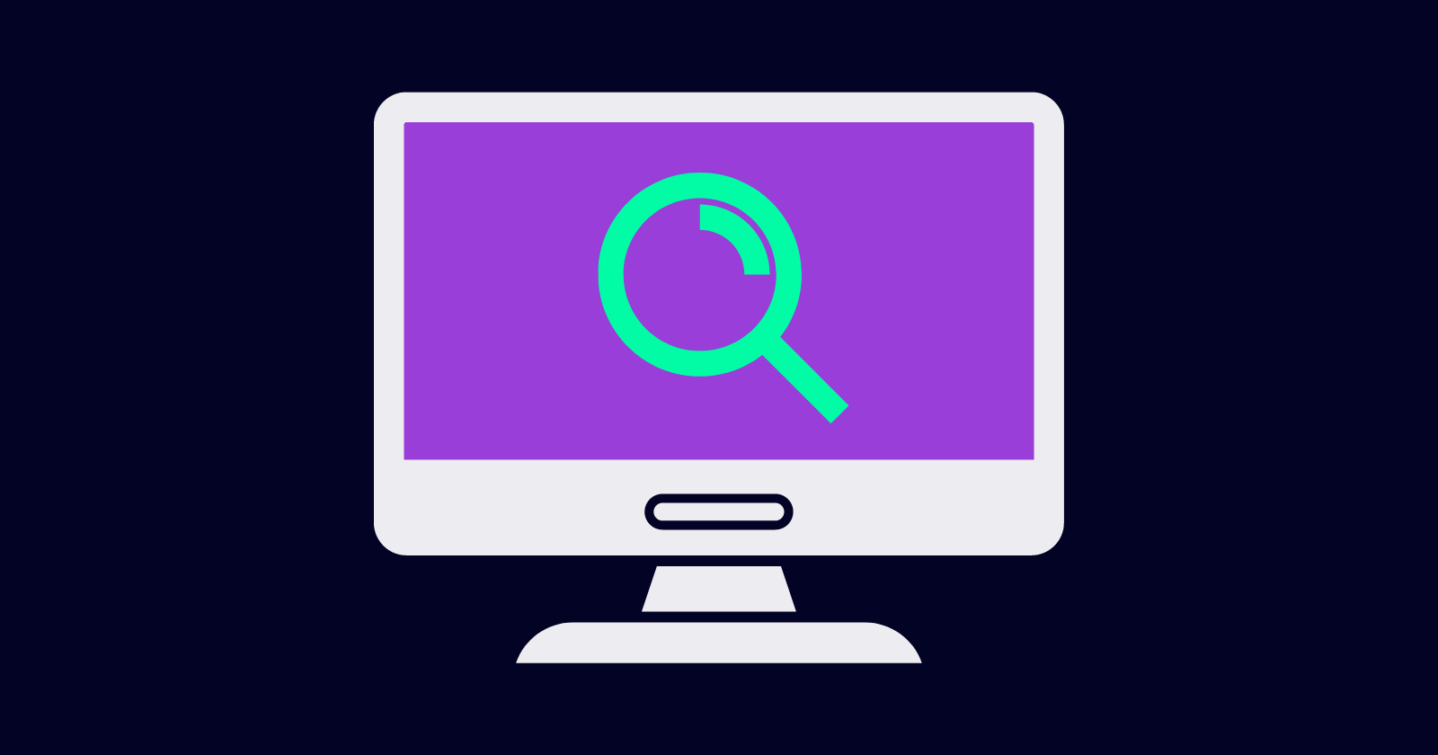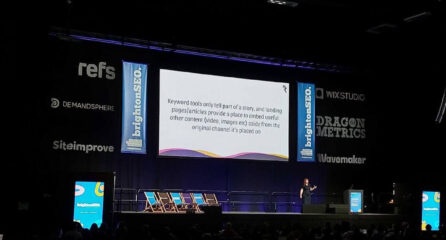Google’s aim is to ‘organise the world’s information and make it universally accessible and useful.’ To realise this and correctly answer the estimated 3.5 billion searches made every day, Google frequently updates its algorithms that determines how search results are found and displayed.
With up to four algorithm updates a year, there can be fluctuations in rankings throughout the year. A drop in search result position following an update can have a real impact on how your business performs, and it can feel like all the hard work that went into building your online presence has been undone.
Fortunately, there are some general guidelines and best practices to follow that should help avoid dips in rankings following an update, or at least lead to a swift recovery soon afterwards.
What is the Google algorithm?
Depending on the source, between 85-95% of internet searches are made using Google. It’s how most people find the information or products they need. Therefore, being found and ranked by Google is extremely important if you want to ensure your website has good visibility and traffic.
Google’s search algorithms are designed to find and display the most relevant results for a search query. It’s incredibly complex and is actually a combination of different algorithms that assess various aspects of a webpage to determine if it will best serve the user. These aspects include:
- Relevance – when we use a search engine, we expect the results of our query to be accurate and provide a relevant response to our search intent. For example, if we want to know the date of the first Olympic Games, we expect Google to return results answering this specific query.
- Usefulness – similar to the above, as well as providing relevant information, we expect search results to be genuinely useful. Everyone has experienced clickbait, where a webpage or website appears to provide useful or interesting information but is actually just irrelevant content. Google aims to return search results that actually answer the search query.
- Usability – another factor that Google considers is the experience of the page. This includes loading times, page structure, how easy it is to navigate and the overall page experience.
- Quality – EEAT (expertise, experience, authoritativeness and trust) is a set of criteria Google uses to assess the quality of online content. These guidelines give an idea of what Google is looking for when ranking search results, so there’s no doubt that EEAT is an important consideration when creating web content.
These are the fundamental elements your website should address and serve to the user if you want to rank well in Google. Each of these elements is made up of many different signals and components that should be implemented to ensure a high standard of SEO. Without them, your page is likely to be badly affected whenever the search engine updates its algorithms.
What is a Google search algorithm update?
To ensure that it best serves the user, Google makes core updates to its algorithms between two and four times a year. The overarching aim is to make sure that search results are useful and relevant for users. Sometimes the updates refer to something specific.
For example, the 2018 Google Medic update mainly targeted YMYL (‘Your Money or Your Life’) sites that have information that could have a real effect on someone’s life, such as major news stories and information about health or financial investments. Because this type of information has the power to positively or negatively influence lives, Google moved to ensure the content is always reliable, well-sourced and backed up by expertise to avoid misinformation.
But, regardless of the specifics of a particular update, underpinning all of them is a move towards rewarding web pages that are genuinely helpful, authoritative and reliable so that users can find the information they’re searching for and trust the results.
How often does Google update its algorithm?
Google makes regular changes to its algorithm, sometimes making multiple changes a day. Keeping track of, and reacting to, each of these would be impossible, but Google makes several core algorithm updates each year. Sometimes they let people know the updates are happening, sometimes they don’t. There are generally two to four core updates a year, and these are what can noticeably affect website rankings.
History of Google algorithm updates
Initially, Google made few updates to its algorithm but makes thousands and tweaks and changes a year. While every update has a purpose, we’re going to take a look at some of the key ones.
The Panda Update
Launched in 2011, the Panda algorithm was designed to target the prevalence of low-quality, uninformative content that was being pumped out by content farms. Panda assigned a quality classification to pages. Ultimately, this meant that thin content, produced quickly and in vast quantities, that provided little value to the user was negatively affected in Google’s search rankings.
The Penguin Update
The Penguin algorithm was an extension of the Panda algorithm and its purpose was to further disrupt spam by targeting manipulative link-building. Before Penguin was put in place, link volume played a more important role in website ranking, and as a result, link exchanges and paying for links was common practice.
Read about the second incarnation of the Penguin update here.
The Hummingbird Update
Hummingbird was released in 2013 and was a major update to the algorithm. As well as making searches faster, Hummingbird made searches much more precise by reducing Google’s reliance on matching keywords and instead allowed the intent of a search to be better understood. This meant that web pages were returned that matched users’ queries. This also showed that Google could better understand which words in a search query were important and which could be discounted, revolutionising the search experience.
The Mobilegeddon Update
As the name suggests, the 2015 Mobilegeddon was a mobile-focused update that categorised pages as either mobile-friendly or not. This aligned with the shift in search behaviour, with people progressively using mobiles rather than desktop browsers for internet searches. The Mobilegeddon update, combined with wider search habits, had a huge impact on site design, with webmasters and designers putting mobile experience first.
RankBrain
RankBrain was also released in 2015 and introduced machine learning to better understand search intent, particularly in novel queries that Google had not seen before. It also used things like searcher location to understand the meaning behind the search. In addition, RankBrain had the ability to learn and adjust how it weighed different variables to further improve search relevance.
The BERT Update
The 2019 Bert algorithm update was another step towards understanding user intent when making a search. With the BERT update, Google could now understand prepositions, and figure out nuances of queries much more easily. This gave content marketers and SEO professionals the ability to be able to write informational articles around really niche and specific questions.
How to recover from Google algorithm updates
A key piece of advice is to not panic. It can be stressful when you see a dip in their ranking after an update, but provided your website includes helpful, quality information that users can easily access, you’ll likely recover rankings in time. Making hasty edits and changes often makes things worse. Usually, the rollout of an algorithm update can take a couple of weeks, and if Google needs to roll back an aspect of the update, it can take even longer.
Google state ‘pages that experience a change after a core update don’t have anything wrong to fix. That said, we understand that those who may not be performing as well after a core update change may still feel they need to do something.’ They suggest focusing on offering the best possible content that’s helpful, reliable and people-first. The search giant also recommends looking at which pages were impacted for which searches and comparing them to better-performing pages.
Providing the type of content described by Google is fundamental to ensure your website performs well. However, making quick, reactive edits in an attempt to regain a former ranking isn’t a good idea. Therefore, it’s best to wait to allow things to stabilise and see if your website recovers its rankings should you see a negative impact.
Google algorithm update recovery tips
If you do see a lasting negative dip in website ranking, this is an indication that something isn’t right. This is also a great opportunity to evaluate the SEO on your site and ensure your site is following best practices.
SEO best practices
As we’ve discussed, underpinning everything is providing informative, authoritative high-quality content. However, there are some key SEO best practices you can follow to give your content the best chance of success and we look at a handful of these below:
- Search intent – you want to make sure that you’re providing what people are searching for. For example, if your audience is searching for ‘how to change a lightbulb’, you’ll want to provide a guide or tutorial answering this query. Search intent can be informational (looking for information), navigational (looking for a specific website), transactional (people looking to buy) and commercial investigation (researching for a future buy).
- Keywords – every webpage should target a primary keyword and this should be present in the page’s H1 and at the start of your content. Secondary and tertiary keywords should be present in other header tags and within the body of the text. You should choose your keyword based on search volumes and the intention of your audience.The key is to pepper them throughout your content naturally – never force or keyword spam.
- Title tags and meta descriptions – title tags provide web pages with a title that appears in your web browser tab and above the link in search results. Therefore, it’s important to use relevant and compelling title tags to persuade users to click through to your site. The meta description is the text that appears below the title tags that provides a summary of the page’s content. These should be succinct but provide enough information to give an accurate picture of the page and convince the user to click.
- Site speed – loading speed is important for both users and Google. Many people will click off a page that doesn’t load quickly enough. You can find the loading speed of a particular page in Google’s page speed insights tool. To improve loading speed, you can compress images, look at switching your site theme or use lazy loading, which only loads videos and images on a page when a user needs them.
- Internal linking – internal linking is the process of linking pages to each other within a site. These should only be used when relevant, but if you link an established, well-performing page to a new page, this can give the new page a boost.
- User experience – web pages need to be navigable and easy to use so that users engage with the page when they arrive and Google can understand your content. Dividing pages up using headers and subheadings, ensuring the page is mobile-friendly, avoiding intrusive pop-ups and using images and videos within the content.
- Identify what the Google algorithm update was addressing
- Different algorithm updates target different things. If there is a clear issue the update is addressing, targeting this on your site can help. For example, after the MobileGeddon update, sites that weren’t previously mobile-friendly then made changes to ensure that they were. But making changes unrelated to the update are unlikely to help regain any lost ranking. That being said, making positive changes that we’ve discussed in this article are always likely to help site performance.
Identify what the Google algorithm update was addressing
Different algorithm updates target different things. If there is a clear issue the update is addressing, targeting this on your site can help. For example, after the MobileGeddon update, sites that weren’t previously mobile-friendly then made changes to ensure that they were. But making changes unrelated to the update are unlikely to help regain any lost ranking. That being said, making positive changes that we’ve discussed in this article are always likely to help site performance.
Look at competitor sites
By examining competitor sites and pages that are now ranking most highly for the affected search term, we can build a picture of what Google is penalising and rewarding. Building an overall picture of the structure and type of content that is ranking most highly can help build a plan or set of changes to implement on your own webpage.
Provide useful content
We can’t stress enough the importance of providing useful, high-quality content. After looking at the above recommendations, go back to review the information that you’re providing. Is it:
- Relevant – is the content relevant to the search terms you’re targeting?
- Useful – is there enough depth to the information? Does it answer the user’s search intention?
- Usable – does the page perform well and provide a good browsing experience?
- Quality – is the content authoritative and trustworthy? Does it demonstrate experience and expertise?
However, sometimes there isn’t anything ‘wrong’ with a web page, and there may be things outside your control. As Google says, it’s a mistake to attempt to change things that aren’t actually issues.
How Loom Digital can help you recover from a Google algorithm update
Even with the handy tips we’ve provided above, identifying and rectifying issues that may be affecting your web page after a Google algorithm update can be time-consuming and difficult to implement. At Loom Digital, we have a team of SEO and content experts that can help. Click here to find out how we can help you improve your website’s search rankings, organic traffic and conversion rates and get in touch if you’d like to learn more about how we can work together.





